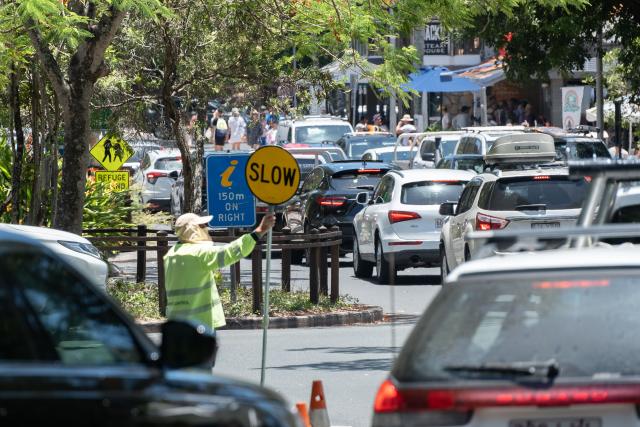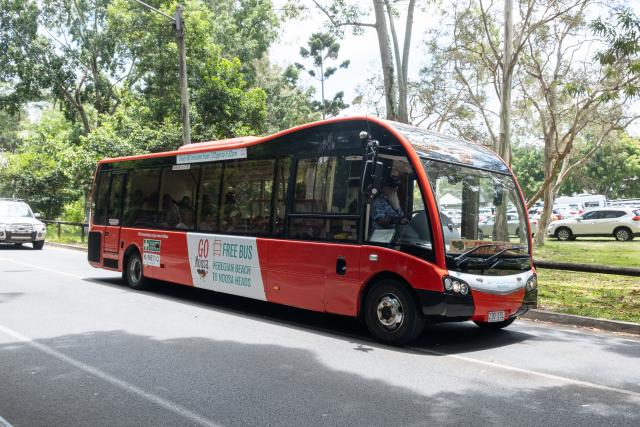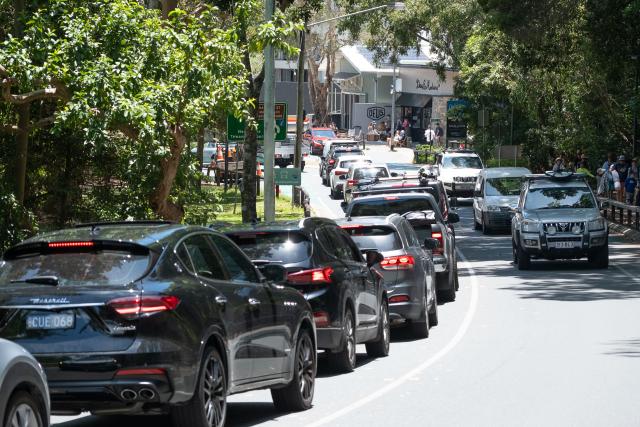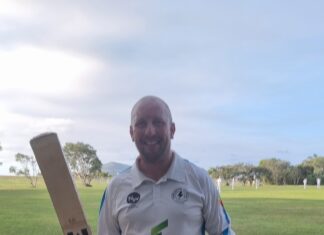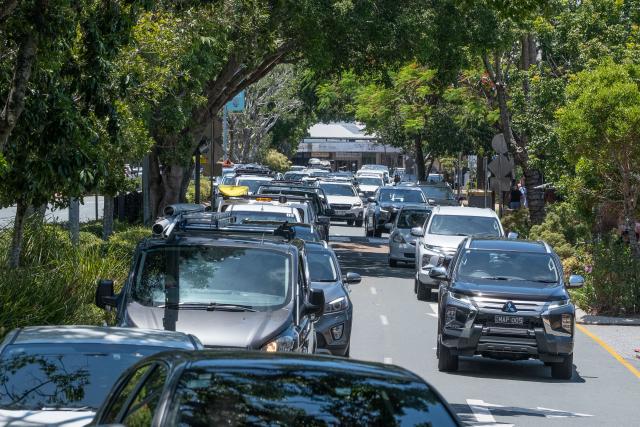
Seven years ago Noosa Council introduced its Noosa Transport Strategy 2017-27, described at the time as “the most important thing facing council going forward”.
With traffic and transport hot topics this council election Noosa Today looks back at council’s strategy implementation since its introduction.
In 2015 Council contracted independent consultants Parsons Brinckerhoff to conduct a study to fix Noosa’s traffic woes.
The study identified challenges which included the growing numbers of visitors, peak time congestion, people’s dependence on cars and the deterrent to cycling and walking of a warm climate and hilly terrain. It also found council funding was limited and a third of Noosa’s population were living in the hinterland with little or no public transport.
After receiving more than 1000 submissions through community consultation in 2017 Mayor Tony Wellington released its draft transport strategy, saying there was no silver bullet to solving Noosa’s traffic congestion issues and the solution needed to be a multi-faceted approach.
The draft strategy outlined six proposed solutions expected to be rolled out over the following “one to two years“.
The strategies included introducing an Active Travel to School program for school kids, trialling a temporary park-and-ride service during peak holiday periods and trialling a shuttle bus that would form a loop with service key destinations such as the marina and Hastings Street.
The draft plan also suggested investigating the introduction of a congestion fee for the Hastings Street precinct and a priority lane on Noosa Parade for sustainable transport modes.
The most controversial proposed strategy was the introduction of paid parking in congested areas such as Hastings Street.
Council proposed establishing a project team to oversee “further investigation“ of five of the six “potential solutions“, the congestion tax not appearing among the five:
1. Park-and-Ride services.
2. The introduction to paid parking in congested areas.
3. Subject to discussions with TransLink, the trial of a high frequency Noosa style shuttle bus to service key destinations.
4. The implementation of Walk and Ride to School programs with supportive schools experiencing significant traffic and congestion issues.
5. Priority transport lanes for sustainable transport modes such as buses, bicycles, scooters and electric vehicles.
Cr Wellington also proposed council introduce an e-transport strategy he said could become a test case for other regions and had garnered interest from the federal government.
The e-transport plan involved the use of Queensland’s first e-bus fleet of “Noosa-styled“ buses with real time information to commuters on the location and arrival of buses through phone apps and electronic timetables. Under the proposal an e-bus charging station and depot would be located in the shire and an electric share bike service would connect travellers from buses to their end destinations.
A new Transit Hub would be built to replace the one on Noosa Parade and a new pedestrian boulevard would connect the Transit Hub with Hastings Street to cut pedestrian activity at the Hastings Street roundabout. Council also planned to duplicate Garth Prowd Bridge and provide transit lanes on Noosa Parade for buses and bikes.
The plan was hatched after data was collected on traffic, parking and pedestrian use in peak and off-peak periods in January and February to determine the key causes of congestion.
The data found parking at peak times to be at capacity throughout Hastings Street, Noosa National Park and Noosa Parade but public car parks in Noosa Junction around The J theatre were only at 40 per cent capacity and behind the transit centre at only 50 per cent capacity. The data also found 80 per cent of people parked for less than three hours and 65 per cent less than two hours and the cause of the traffic wasn’t simply due to the volume of vehicles.
The data found the congestion was mainly due to pedestrians crossing the road at the Hastings Street roundabout, cars holding up the traffic while they waited to access a park or waited for another car to park and slow moving vehicles searching for a park.
During one day over 13.5 hours from 6.30am to 8pm there were more than 7000 cars travelling both south and north and 12,000 pedestrian crossings (about one every four seconds) at Hastings Street roundabout.
Council announced it had signed global bus manufacturer Higer Bus and Coach to provide electric buses for a six-month trial expected around 2018 with two 25-seater buses expected on the road in the project driven by the council and TransLink.
The buses were to be powered by Aowei Ultracapacitors (UCAP) and, unlike batteries, to recharge in minutes via overhead charging plates.
But in June 2017 the project was halted and electric buses cancelled because the supplier had been unable to meet “contractual target dates”.
In December 2018 the Go Noosa trials were launched for the school holidays and included free buses on six bus routes from Peregian Beach to Noosa Heads and the hinterland towns of Cooroy, Pomona and Cooran, a Hastings Street staff ride sharing app and roadside digital information boards to alert drivers to the car parking availability in Hastings Street and direct them to alternative travel options. Traffic controllers were to help pedestrians cross Hastings Street and assist bus access and paid parking at Noosa Heads Lions Park was to be managed by the Tewantin Noosa Lions Club.
At the end of 2021 council committed more than $8 million to a 1.2km upgrade of Noosa Parade described as a “legacy project“ that would make cycling or walking the preferred mode of transport to Hastings Street and cars an “after thought“.
The tender for the project contract was awarded to Bellwether Contractors with the project to be partly funded by grants.
The project created a 2.5m off-road shared cycle and pedestrian path and widened the existing on-road cycle path to 1.6m.
“We’re not doing this to reduce congestion or create more car parks, it’s about behaviour change. We’re hopeful the demand will be such that we’ll be creating more cycle lanes like this,“ was Council’s sentiment at the time.
In 2022 Council’s Go Noosa free bus holiday program expanded to include a free weekend bus trial.
“With free buses during holidays and on weekends, residents and visitors can now travel for free to work, the shops, the hinterland or the beach for more than 140 days a year,” Mayor Clare Stewart said.
The Go Noosa program is all about achieving Council’s transport vision of an efficient, free-flowing, innovative transport system that enhances resident and visitor experiences and results in sustainable environmental outcomes.
“It’s about changing the long-term behaviour of travellers, making it second nature to get on a bus to get around.“
In January 2023 Council celebrated the one millionth passenger of the free bus holiday program.
In April 2023 there was much discussion on paid car parking in Lions Park, Hastings Street on school holidays and long weekends when Council raised a proposal to cut back State Government approval of the parking to 2023 Easter and Christmas holidays before put its future use to the community for feedback.
There was opposition to the move from various groups including the Tewantin Noosa Lions Club which declared its need was vital, and shared parking revenue with Council, using the funds on numerous community projects, and the Chamber of Commerce, which described the proposal as offering no solution to parking and traffic issues and flew in the face of Council staff who had recommended it be continued through to May 2024.

